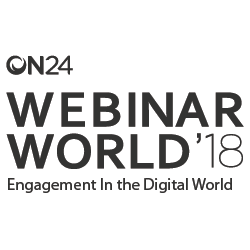 To gate or not to gate, that is the question. It’s an argument as old as time. Or at least as old as digital marketing. For many years, the standard arrangement between companies and prospects was that companies would give you a valuable piece of content in exchange for some basic contact and/or demographic information. The “registration form” became an expected, and occasionally feared, part of the bargain. Once you filled out the form, you knew you were signing up for a bombardment of emails and phone calls. It was the price you paid.
To gate or not to gate, that is the question. It’s an argument as old as time. Or at least as old as digital marketing. For many years, the standard arrangement between companies and prospects was that companies would give you a valuable piece of content in exchange for some basic contact and/or demographic information. The “registration form” became an expected, and occasionally feared, part of the bargain. Once you filled out the form, you knew you were signing up for a bombardment of emails and phone calls. It was the price you paid.
Then something changed. The information age delivered on its promise and information was everywhere. If you didn’t want to fill out someone’s form, you could simply find what you needed from another source. New content types sprung from new channels. There were social sites, peer networks, forums, and wikis. Suddenly, you could easily access content on any subject. Unsurprisingly, conversion rates on gated forms plummeted.
This gets us to the heart of the debate. If we want people to consume our content, engage with our brands and hopefully consider our products or services, should we simply lose the gated form and let everyone view whatever they want? The logic being the more exposure the better, so let them have it all. That’s just what some companies did. You have all heard the stories of how “X” company bravely threw open their gates, gave away all their content and had amazing results. Yet for some reason, most marketing teams did not adopt this model. Why?
Also Read: Context Is King: The Rise of Contextual Advertising in 2018
Well for one, if you examine these heroic companies, you realize what many of them did was simply ungate a lot of their written content. Higher level, engagement-driven content like webinars and live demos were still gated. That makes sense. The point is that different forms of content don’t hold the same value or play the same role.
What’s missing from this debate is the role of content engagement. Most content (like white papers, infographics and blog posts) are static. This means once someone downloads a piece of content, gated or not, there is no additional interaction with that person. They either read the white paper, don’t read it, read some of it; you simply don’t know. As they read your content, they may have thoughts, feelings and questions, but you can’t capture that feedback as there is no actual engagement. Even videos are passive content as the viewer can’t do anything except, well, watch the video. You are not learning anything about your prospect from the content experience.
Then there is dynamic content delivery. Let’s take the example of webinars: you have a piece of high-value content, perhaps a thought leadership presentation, but now your audience can engage with you throughout the experience. They can ask questions, respond to polls, download other content, tweet, post, link to free trials, demos or other key conversions. All that engagement (behavioral data) helps you identify your best leads. But that doesn’t work unless you know who they are.
Also Read: Why the Tug-of-War Will Continue in 2018 Social Marketing
Getting names is always good. “More leads” has been the longstanding marketing mantra. However, there is a shift taking place from more leads to better leads. Registration form data (the gate) only gives you the name and contact information. The real goal for marketers today should be the well qualified lead. Are they interested? What are their needs? What are their concerns? High-value content delivered through an engagement-driven experience helps us find those leads.
Perhaps the great gate debate is the wrong premise. As our marketing becomes more digital it also becomes more impersonal. Today, we should focus on delivering real human experiences where we can get beyond the gated form, interact with our prospects and learn more about them then simple demographic data. So, what does this mean in practice?
- Deliver your best high-value content through engagement-driven experiences; webinars, virtual environments, live demos, etg. This is the content you gate. Get the name and then measure the behavior.
- Offer up a lot of your static content, ungated, as teaser content to get people to a gated engagement.
- Once you have contact information on a prospect remove, or lessen, the gates and drive them towards additional engagement which will help you create connections that close.
The bargain we created long ago, where you get a great piece of content for some contact information, is now void. Both sides need more. Your audience wants to experience your content and engage with you in the process. In return, that conversation helps you learn more about them. In the digital world, human engagement may be our best chance to turn great content into happy customers.
Also Read: Are Creative Marketplaces and Dynamic Creative Optimization the Future of Online Advertising?











